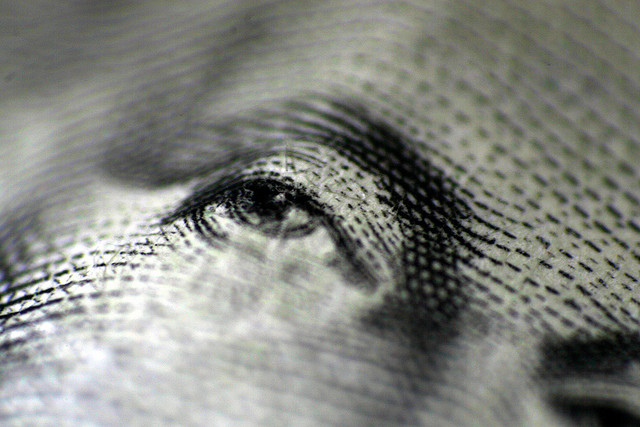ICYMI: Here’s a fantastic documentary series produced by CBC’s Doc Zone and worth viewing as we mark the sixth anniversary of the 2008 financial crisis that hit global markets in August of that year.
It’s also timely to watch this four-part series considering we’ve just observed another Labour Day in North America.
After all, the economic crash was as much about the trampling of workers’ rights as it was about the greed and lawlessness of capitalists on Wall Street and around the world.
Narrated and produced by the Canadian filmmaker Terrence McKenna, the series is as thorough as it is accessible in explaining how and why many parts of the world suffered immense losses following the collapse of major banking institutions in the U.S. and abroad.
With interviews from key players including politicians, journalists, authors, and those most affected by the sudden collapse of the world’s largest banks, viewers hear first-hand about how an “orgy of greed and recklessness…drove the world into financial collapse.”
Footage of congressional hearings and commissions, as well as video of protests in China, France, and Iceland, the U.S., and here in Canada, also vividly illustrate the global ramifications of the disaster.
Each part of the series focuses on a particular angle of the crisis. Part one introduces viewers to the “titans of Wall Street” who essentially gambled with the infamous sub-prime mortgage packages that would prove to be toxic. And as one expert notes, some of the characters involved seemed right out of a Hollywood script. Take Jimmy Cayne, for example, former CEO of Bear Stearns, a global investment bank and securities and trading brokerage firm. The businessman, described as both ruthless and charming, was worth over one billion dollars. Every Thursday afternoon, following the close of the stock market, he would be whisked away by a private helicopter to his country house in Jersey Shore for a weekend of bridge and golf. He was called “one of the Worst American CEOs of All Time,” as he was too busy with his leisure activities to realize his bank was crumbling.
This part also provides insight into how a former Wall Street CEO became the United States’ Treasury Secretary between 2006 and 2008. Hank Paulson, nicknamed “the Hammer,” would work almost to collapse himself trying to convince Congress to bail out the banks (which they did).
Part two continues with an examination of how the collapse of banks in America, Iceland, and Europe would impact everyday people, including Americans in California. There, up to 20 houses a week were under foreclosure, up from just one or two a week. In fact, according to 2010 figures, one out of every 16 homes in California’s Central Valley was being foreclosed in that dark period.
While it was a French bank that first sounded the alarm in the late summer of 2008, the French, along with other European leaders, did not know how to face the crisis. European leaders couldn’t agree on a bail-out package, with German Chancellor Angela Merkel putting up the strongest resistance (Then- French President Nicolas Sarkozy would later gloat that Merkel would discover that her government would be forced to bail out a German mortgage company later that same day.)
Iceland, as many will remember, faced bankruptcy as a result of the previous actions of their “Machiavellian” former Prime Minister David Oddson. A few years earlier, Oddson had decided to “shake Iceland out of its social democratic past in order to remake the country according to his free market principles.” He would privatize everything, including the banks. When the crisis hit, the banks — and their clients, including British citizens who had been encouraged to invest in them — were left with nothing. When the Icelandic government refused to guarantee British deposits, the British government froze the assets of Icelandic companies and placed their bank on a list of terrorist entities, among the likes of Al-Qaeda and North Korea (though shady banking practices were certainly discovered in England’s own financial sector as well).
Part three is essentially an ode to the attempts of workers to hold employers to account for the destruction of their livelihoods, while many of the profiteers made off like bandits. Of the workers profiled, the French workers were the most forceful in standing up to management, going as far as holding their bosses hostage until negotiations were agreed to. But certainly, the workers did not win in this fight.
Even though the final part of the series attempts to predict whether future financial crises will be averted because of the lessons supposedly learned by the meltdown, it is disappointing that we really aren’t left with much of a sense as to what should be done. The film simply leaves us with the conviction that something must be done.
Let’s hope there’s enough money left in CBC’s budget to explore the questions that remain.
Meltdown is available at CBC.ca. To suggest films for review, email [email protected] or tweet her at @AmiraElghawaby
Photo: flickr/peasap



